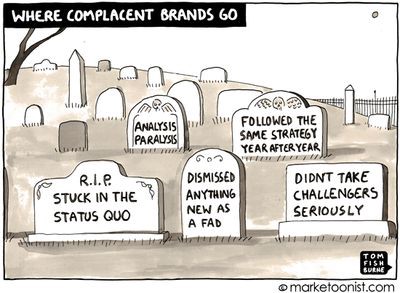
Editor’s note: We are very thankful for friends like Jennifer who are there when parental moves come into the picture. Today’s opening picture was snapped last night as we prepared for the last leg of the “Planes, Automobiles, Hurricane, U-Haul, Trains” variant of the great Steve Martin/ John Candy Film. And, after 14 hours in a U-Haul, we can attest that it’s not an automobile!
The market commentary and the iPhone backlog status are complete and will be posted to the website (www.sundaybrief.com) separately Sunday evening.
Now on to Jennifer’s column…
Thank you, Jim, for giving me the honor of picking up your beloved Sunday Brief pen!
Since our last guest chat (September 2020) much has changed in both the industry, and in my own world.
In that first “COVID fall”, our main topic was the forthcoming fiber surge the world would see. That has clearly played out in quite a dramatic way. A simple word search of the word “Fiber” from AT&T’s July Q2 2022 earnings transcript yields 46 hits. So many new fiber to the home players and over-builders have emerged in the past two years, it is hard to keep track. In the wake of the COVID pandemic a robust and high-speed broadband connection has become an essential utility in people’s lives.
In my own life much has also changed! I went from being an equity analyst to accepting a role on the “dark side” (aka banking!). I find it a great opportunity to challenge my creative thinking in new and different ways – but still tap into my old research “toolbox.” Because of this new role, I cannot speak to specific companies – but rather larger / bigger picture trends.
The timing of this assignment is especially fortuitous as I just returned from the TMT Finance conference in NYC. This is a great conference because it is full of “money folks” (infrastructure funds, PE, pension funds and a whole lot of bankers!).
It was an incredibly timely event as the world seems to have flipped a bit upside down of late. Credit markets are all but shut down (see this story from last week’s Wall Street Journal for the avoidance of any doubt) and the public equity markets have been quite painful. Despite these “fun” times, the main takeaway from the conference was this: Macro events are not slowing the traffic being placed on all silos of communications networks; infrastructure needs to stand up (in an aggressive and tangible way) to keep up with this incredible demand.
There are many sub-bullets that go under this point. Here are five of the most important ones which tie into this larger theme:
- LOT OF DEBATE ON FIBER TO THE HOME (FTTH) FROTHINESS – Investors seem to be mixed on whether fiber to the home is in a wave of euphoria that soon will crash. This has been a noticeable change since earlier this year when it was a “trees grow to the sky” type of environment in FTTH. No one doubts the need for this service – but some believe that there were/are silly capital chasing opportunities at irrational multiples and severe carnage could be seen. Some view this as an opportunity to let Humpty Dumpty fall and put these pieces back together again. Others view this as land grab time, especially with all the subsidies coming toward it.
- TOWERS – KEEP STANDING TALL (Literally & Figuratively!) – The tower panel spoke to the strong demand being seen in this business. Even though interest rates have an inverse effect on the towers (tower stocks are down 23% since August 1 alone), they are not impacting demand for the need for more cell sites. With 380 megahertz of licensed midband spectrum freed up by the FCC in the last two years alone, macro towers are seeing strong demand and urgency from carriers to get this spectrum live. While technically this spectrum may be best deployed with small cells (assuming physics laws still are intact) small cells are a more expensive and time-consuming infrastructure solution. Passive infrastructure is easier and faster. And when you are AT&T and Verizon, which spent ~ $82 billion on C-Band spectrum alone, you need to get moving; the carrying costs of sitting idle are high. Time is of the essence and, for towers, manna is indeed coming down from heaven! It is because of this that private market multiples in this space still represent eye popping numbers (30x – 35x+ EBITDA are not uncommon these days).
- ENTERPRISE FIBER – NOT FEELING THE LOVE – Interestingly, enterprise fiber – once THE hot topic in any digital infrastructure conference still seems to be the ignored player sitting on the bench. One infrastructure fund remarked that although the world has bought into this whole ‘software eating the world’ talking point – if we see a meaningful recession, enterprises will begin to examine everything from software licenses to the bills they pay for the network that supports these licenses. It brings to mind the famous line from Randall Stephenson, former AT&T CEO, when discussing AT&T’s enterprise business: it will rise or fall “as long as there are butts in seats.” Fewer butts => less spend.
Nonetheless, one should not forget that if some of these “orphan” enterprise fiber assets lock arms together they make a formative fiber asset with a meaningful moat around it. Unlike the FTTH market (point #1) these assets seem to be somewhat forgotten by investors. In a glass half full sort of way, that is a good thing as there is not aggressive overbuilding occurring like we are seeing in the FTTH area. If the next Dan Caruso / John Scarano (founders of Zayo) team emerges with a vision and playbook – enterprise fiber could be the most interesting Communications Infrastructure Asset class in three years’ time.
- DATA CENTERS – DEMAND VERY MUCH THERE BUT POWER MAY BE LONG POLE IN THE TENT – A continuous message was that demand for data centers remains significant. As one former data center executive mentioned to me in passing, “Jennifer – when you were an analyst [only two short years ago!] 30 Megawatts was a big deal… now when the word ‘Gigawatt’ rolls off my tongue is almost every conversation!” To put this in perspective one megawatt (MW) = 1 million watts. One gigawatt (GW) = 1 billion watts. Yep! It is THAT big!
While having more demand is a positive – it comes at a cost. The critical lynchpin needed to support this growth? Power. Eric Luebchow – Senior Telecom Services and Communications Infrastructure Analyst at Wells Fargo – was one of the first to shed light on this issue. In a note to investors on July 27 titled: “NoVA’s Data Center Alley Facing Power Crisis” he discussed how the Northern Virginia (NoVa) market (the largest Data Center market by a mile) is experiencing “a power crisis in which they potentially plan to completely halt power delivery for new data centers under construction until 2025 or 2026.”
The water cooler chat in NYC was that NoVa may be the little canary flying around the coalmine and other markets will see similar pressure. Something to watch. Big call out to Eric for uncovering this before anyone else on the Street!
- EDGE IS BECOMING A LOT MORE REAL – A consistent theme at the conference was about the edge. This is clearly becoming more than just a white board concept. While all agree there needs to be more computing near the (proverbial) “eyeballs,” the shape of this model remains up for debate. A recent survey by 451 Research with almost 450 IT decision markets this past summer offered some interesting findings. Most fascinating datapoint was this: Enterprises express a preference for as-a-service approaches to edge infrastructure, compared with Do It Yourself (DIY) approaches. If that is true – then there will be a whole crop of new businesses to watch!
As mentioned above, the common thread in each of these themes is the need for more Communications Infrastructure. This cannot be debated. At the conference, an online survey of attendees was asked the following question:
“How bullish are you on market appetite for Digital Infrastructure investment in the next 12 months?”
Perhaps not too surprisingly, 58% replied “Very Optimistic”
Given my day job, that is music to my ears!
But a follow up question should have been: Do the companies that need to drive this infrastructure have the balance sheet flexibility to lean into this spend?
All agree it has to come… but can it? In the face of rising rates, closed debt markets, heavy dividend payments (handcuffs?), inflation worries, supply chain pressures, the large incumbents (on both the cable and telecom side) and even the hyperscalers will face some tough decisions here. (Glass half empty view)
Yet one needs to balance this with the fact that there are billions (and billions!) of dollars in the hands of infrastructure funds looking for opportunities to play in the digital infrastructure space. These funds are only themselves paid by putting this capital to work and writing (very!) large checks. They have the capital – they just need the tenured management team and assets to deploy it. (Glass half full view)
It seems inevitable partnerships will continue to emerge. While we saw a whole lot of this in the past few years (CyrusOne/ KKR/ GIP, DigitalBridge/ Switch, Stonepeak/ Lumen, Zayo/ EQT/ DigitalBridge, Morrison & Co./ Fiberlight, Parallel Towers/ Palistar, Apollo/ Brightspeed [Lumen]), to quote the great Karen Carpenter – I think “we have only just begun.”
The shape and nuances of those partnerships will be the key element on the road to success. If I was asked to make a prediction for 2023 – it is that each of those five themes listed above will have some more infrastructure funds bending toward of it. Some new and not so new names will emerge. The companies which are delivering the management teams and assets for this growth will have to think of the world a whole lot differently than they did in the past. The lens in which they view their companies needs to be wider than it once was.
Simply put, the worst thing that companies can do right now is sit still or pull back cap-ex. The tsunami of data is here and only accelerating (even while comping very large numbers). This is happening in EACH Communications Infrastructure vertical (FTTH, towers, data centers, edge).
To sit still and retrench will not work. In the almost three decades of telecom cycles I have lived through, the graveyard of hesitant (or idle) is quite full (a picture is worth a thousand words!)

Yet growth is only going to be supported if the infrastructure is in place to help foster it. Those companies that take the Drucker “innovate or die” memo to heart will be best positioned.
If there is one thing to remember from this write up it is these 3 sentences:
1) Infrastructure = the foundation of all.
2) A home does not stand without a strong foundation.
3) Strong and trustworthy partnerships are key to making a “happy (& stable) home.”
Lots to watch over the next few years – we are in unchartered (yet, quite exciting!) times.
Keep that glass half full attitude going… I know I am

